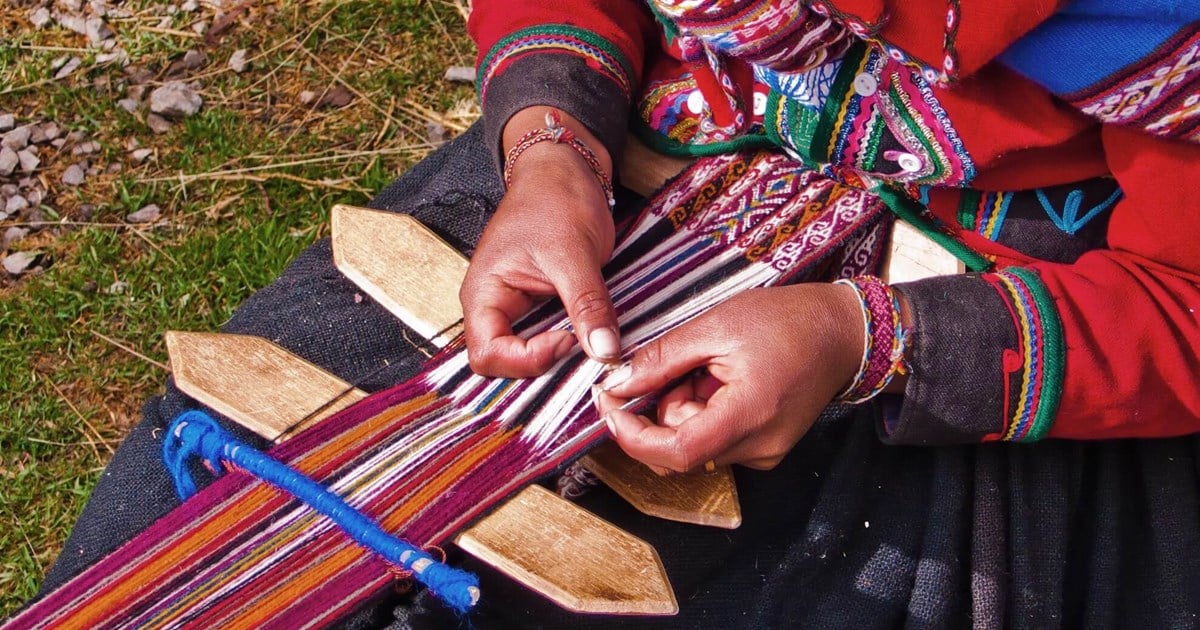Welcome to our newsletter, dear readers.
We begin our monthly selection with one of René Guénon’s masterful chapters on symbolism and metaphysics, “The Symbolism of Weaving”.
The threads of the warp, by which the corresponding points in all states are connected, form the sacred book which is the prototype (or rather, archetype) of all traditional scriptures, and of which these scriptures are merely expressions in human language. The threads of the weft, each of which is the development of events in a certain state, form the commentary, in the sense that they give the applications relating to the different states; all events, envisaged in the simultaneity of the “timeless”, are thus inscribed in the Book.
Inca traditional weaving from Chinchero, Peru.
• Next, in “The Fire in the Heart”, a homily from the early Church Father Pseudo-Macarius we find a most subtle science of traditional psychology, and glimpses of what has been called a “spirituality of the heart”.
It sometimes happens that Satan carries on a dialogue within your heart, such as: “See what great evils you have committed; see how your soul is full of so many follies. See how you are weighed down by sins so that you can hardly expect to be saved.” These things he does to lead you to despair, thinking that your repentance has not been acceptable… But you answer him in this way: “I have the Lord’s testimonies in Scripture: ‘I do not wish the death of sinners but their repentance so that the sinner himself may turn from his wicked way and live’.”
• Finally, we have the essay “Happiness as a Skill” by Thanissaro Bhikkhu, master of the Buddhist Thai Forest Tradition and abbott of the Metta Forest Monastery, going deep into the scriptural and contemplative views on some key concepts of Buddhist ethics and spiritual life.
The Buddha, seeing that happiness does come in lesser and greater forms, searched for actions that reliably could lead to higher and higher levels of happiness, and ultimately to the total, unchanging happiness of unbinding.




